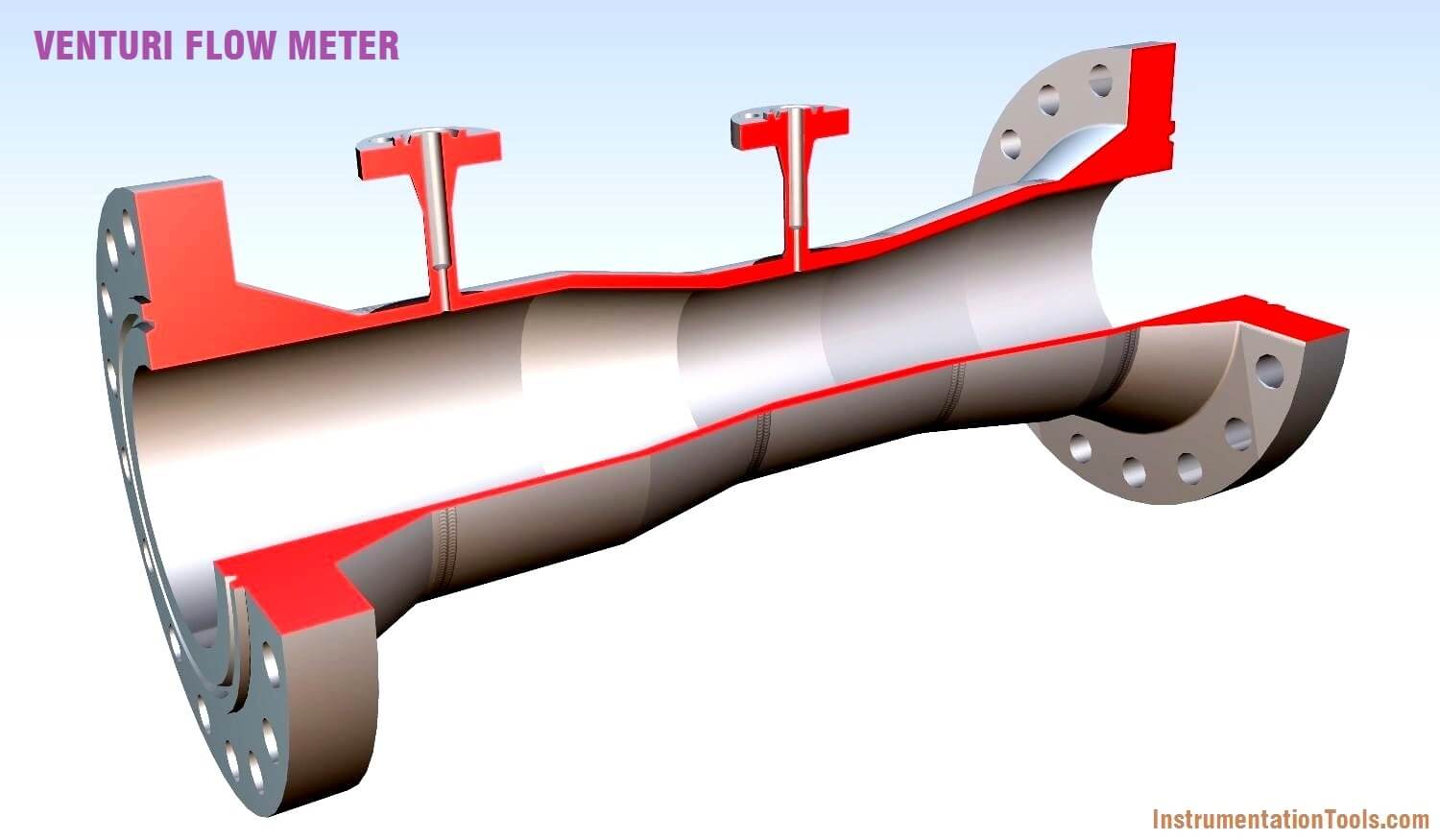A venturi tube contains a throat that is smaller in diameter than the pipeline, into which it fits. The restriction diameter should not be less than 0.224 D and not more than 0.742 D where D is the nominal bore diameter of the pipe.
When the fluid flows through it, the pressure at the throat is lower than the upstream pressure (because of increased kinetic energy due to increased velocity, ½ mv2) and the consequent reduction in flow energy (Ef = P . v).

The flow rate is proportional to the pressure difference, P1 – P2.
where, k is dependent on the pipeline and throat diameter, density, and discharge coefficient
The venturi flow meter should always be used for turbulent flow. Its accuracy for a wide range of instruments is about 0.5%. ideal for use in Heat Ventilation Air Cond. (HVAC) applications, or air to furnaces and boilers and for liquids containing particles and slurries.
The Venturi effect is the reduction in fluid pressure that results when a fluid flows through a constricted section (or choke) of a pipe. The Venturi effect is named after Giovanni Battista Venturi (1746–1822), an Italian physicist.
In fluid dynamics, a fluid’s velocity must increase as it passes through a constriction in accordance with the principle of mass continuity, while its static pressure must decrease in accordance with the principle of conservation of mechanical energy.
Thus any gain in kinetic energy a fluid may accrue due to its increased velocity through a constriction is balanced by a drop in pressure.
By measuring the change in pressure, the flow rate can be determined, as in various flow measurement devices such as venturi meters, venturi nozzles, and orifice plates.
If you liked this article, then please subscribe to our YouTube Channel for Instrumentation, Electrical, PLC, and SCADA video tutorials.
You can also follow us on Facebook and Twitter to receive daily updates.
Read Next:
Learn an example PLC program to control a pump based on level sensors using ladder…
In the PLC timer application for security camera recording, when motion is detected then camera…
In this example, we will learn batch mixing with PLC ladder logic program using timer…
This PLC example on manufacturing line assembly is an intermediate-level PLC program prepared for the…
In this article, you will learn the PLC programming example with pushbutton and motor control…
This article teaches how to convert Boolean logic to PLC programming ladder logic with the…
View Comments
what is diffrence between hart protocol and field foundation please explain in detail
Hello, Differences already available in Communication Category. Pl check.
please explain about venturi installation , where taken out high pressure taping and low pressure taping and more detail